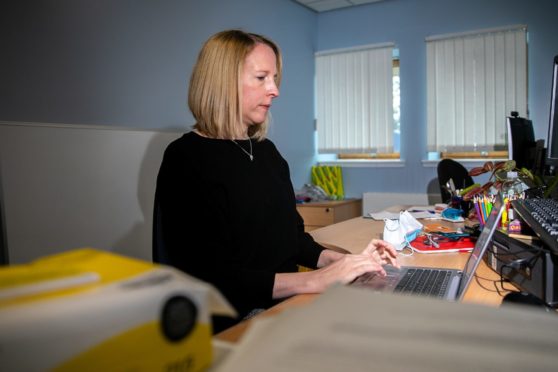A study into why certain Tayside and Fife care homes have seen more coronavirus deaths than others could help save lives, researchers hope.
The Dundee University work will look at data from all local facilities over the past year in an attempt to limit further tragedy.
Since March last year, there have been 424 care home deaths in Tayside and Fife.
Some local homes, such as South Grange in Monifieth, and Lomond Court in Glenrothes, saw fatalities in the double-figures.
Others meanwhile did not see a single outbreak or death.
‘Disproportionate’ impact
How could this happen?
Well, that’s exactly what the study hopes to find out.
It will look at the characteristics of homes, including the type of residents who stay there.
It will also assess some more surprising criteria, such as a building’s design and age.
On an operational level, it will look at how policies on hospital admissions and discharging residents altered as government approach to testing changed.
It’s true most care home residents have now been vaccinated and should be safe but no vaccine is 100% effective.
The woman behind the study, Dr Charis Marwick, is an expert in infectious diseases at Dundee University’s School of Medicine.
“It’s been completely devastating for the sector,” she says.
“What we want to do is look at it and say what can we do differently?
“Was it just the area they were in had more Covid in the community?
“Or, for example, is there something about older buildings versus newer buildings?
“Is there something in relation to the size of a home and whether a bigger one is split up into smaller units?
“We’re looking at the care homes themselves, although this isn’t an architectural study.
“We’re not going to be able to get into the nitty-gritty of building design and make particular recommendations about that.”
Research needs to be done ‘quickly’
Care homes were advised to shut to visitors in March 2020 as the pandemic began to take hold in the UK.
Despite this, there were major outbreaks across the country and many care facilities were overwhelmed.
The 424 to have occurred locally is made up of 66 in Angus, 110 in Dundee, 165 in Fife, and 83 in Perth and Kinross.
It’s believed the transfers were fuelled by panic at seeing Italian hospitals overwhelmed.
Although Dr Marwick will look only at Tayside and Fife homes, she believes the research could have much wider significance.
“Our data is local so the immediate relevance is Tayside and Fife but many of the findings will be applicable beyond,” she said.
“There has been some work on death rates among care homes and how they varied over the pandemic.
“A lot of these studies are only looking at cases of Covid rather than residents or homes which weren’t affected.
“That’s what makes this one more unique. There’s also nothing yet that I’ve seen published that includes the second wave.
“It’s being funded by local donors and one of the briefs is they want it done quickly. That’s so it can be used to benefit care homes right away.
“We’re getting it done as quickly as we can — while analysing the data properly — and hope to be able to start sharing results in around two months.”
She added: “This study will analyse a wealth of data, examining the relationship between residents, care homes and changes in care throughout the pandemic.
“By the end we hope the findings will identify risks to care home residents that could be mitigated to protect these people, who are among those most susceptible to this deadly virus.”
Not the last pandemic
The project will also compare changes in healthcare use between affected homes and unaffected homes.
It’s hoped this will help authorities understand whether alterations in service were a direct consequence of the pandemic or an indirect consequence due to changes in wider healthcare provision during lockdown.
The findings will be made available to local health authorities, allowing them change policies and hopefully avoid further needless deaths.
The £32,000 cost of the work has been awarded by the university’s own Coronavirus Research Fundraising Campaign, which has awarded grants to projects dedicated to improving our understanding of Covid-19.
Scientists are now warning Covid-19 is unlikely to be the last pandemic to wreak havoc on the world.
It means the potential remains for the frailties in society to be exposed once again.
The study could go some way to preventing this on a local level.
But there are other investigations in the pipework with an eye on better understanding what happened in the first few months.





